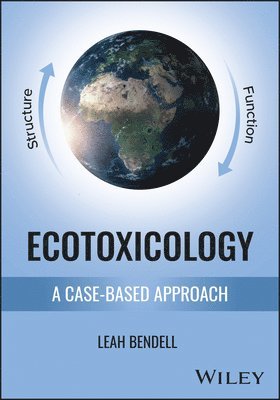Kommande

2709:-
This text is the first to discuss toxicology in a framework of ecosystem structure and function. By doing so it demonstrates how Ecotoxicology is very different from Environmental Toxicology and deserves to be recognized as a stand-alone science.
The Book is divided into 3 sections. Section I provides the definition, background and the ecological context of the science of Ecotoxicology. Section II is comprised of 6 chapters, each detailing a selected anthropogenic impact. The first case study is Acid Rain, one of the first anthropogenic impacts that defined the science of Ecotoxicology, followed by the altering of trace metal cycles using the examples of mercury, cadmium, and lead. The next chapter discusses the ecotoxicology of finfish and shellfish aquaculture at a global scale. Next, the tar sands of Canada are examined as an example of the consequences of oil and gas extraction. The final case study discusses persistent contaminants, covering chemical dump sites in Lake Ontario, as well as microplastics and emerging contaminants of concern. The final section highlights future directions of Ecotoxicology.
Each chapter begins with an overview to the environmental issue, then provides a case study where the scientific approach of Ecotoxicology is taken to understand the impact and by doing so provide mitigation and restoration strategies. Each chapter also provides a test bank as well as a reading list.
The Book is divided into 3 sections. Section I provides the definition, background and the ecological context of the science of Ecotoxicology. Section II is comprised of 6 chapters, each detailing a selected anthropogenic impact. The first case study is Acid Rain, one of the first anthropogenic impacts that defined the science of Ecotoxicology, followed by the altering of trace metal cycles using the examples of mercury, cadmium, and lead. The next chapter discusses the ecotoxicology of finfish and shellfish aquaculture at a global scale. Next, the tar sands of Canada are examined as an example of the consequences of oil and gas extraction. The final case study discusses persistent contaminants, covering chemical dump sites in Lake Ontario, as well as microplastics and emerging contaminants of concern. The final section highlights future directions of Ecotoxicology.
Each chapter begins with an overview to the environmental issue, then provides a case study where the scientific approach of Ecotoxicology is taken to understand the impact and by doing so provide mitigation and restoration strategies. Each chapter also provides a test bank as well as a reading list.
- Format: Inbunden
- ISBN: 9781394197446
- Språk: Engelska
- Antal sidor: 320
- Utgivningsdatum: 2025-08-01
- Förlag: Wiley

